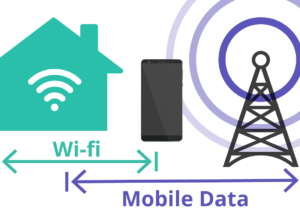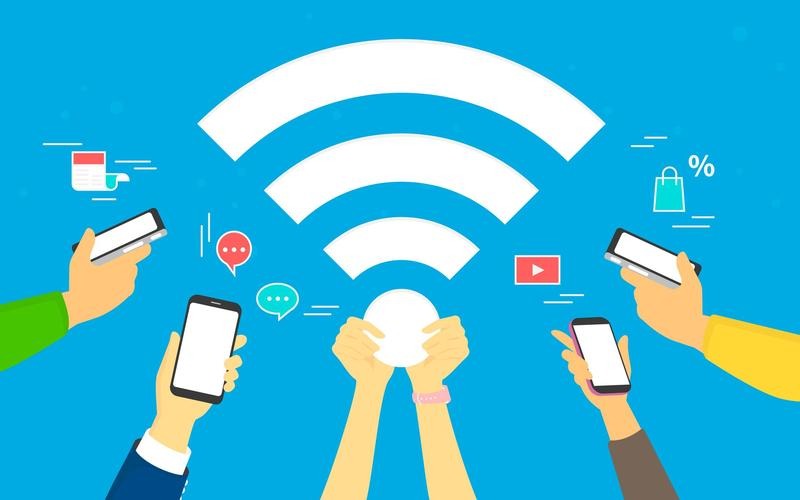What’s the difference between wi-fi and cellular data?

Are you lost when people start talking about Wi-Fi, cellular data and cellular networks? Do you know the difference between using Wi-Fi for data vs. cellular? And why does it matter to you? Understanding the difference between wi-fi and data will help you better tailor how you use your mobile devices to help save you money.
In today’s world of smartphones, it’s important to know the difference between Wi-Fi and cellular data to save money and use your phone better. Here’s a simple guide to help you understand.
What is a Cellular Network?
A cellular network is a system of cell towers that lets you make phone calls, send texts, and use the internet. Your phone connects to these towers automatically, and as you move around, it switches from one tower to another to keep you connected. In some areas, like the countryside or places with mountains, the connection might be weaker.
What is Wi-Fi?
Wi-Fi is a local network you connect to with a router at home, work, or in public places like cafes. To use Wi-Fi, you need to select the network on your phone and enter a password. Once connected, your phone will remember the network and connect automatically when you’re in range.
Key Differences Between Cellular and Wi-Fi
- Range: Cellular networks cover large areas using cell towers, while Wi-Fi is limited to the area around the router.
- Connection: Cellular connections are automatic. Wi-Fi connections need to be set up manually at first.
- Cost: Using cellular data is part of your mobile plan and can be limited. Using Wi-Fi doesn’t count against your mobile data and is usually faster and cheaper.
How Your Phone Uses Data
Your phone uses data for things like browsing the internet, watching videos, and using social media. This data can come from either cellular networks or Wi-Fi:
- Cellular Data: When you’re not connected to Wi-Fi, your phone uses cellular data, which is part of your mobile plan.
- Wi-Fi: When connected to Wi-Fi, your phone uses that network for internet activities, saving your cellular data.
Choosing the Right Data Plan
We use our phones for so many different things besides making phone calls and texting, such as getting our e-mail, watching videos, or social media. Each of these features uses data.
Many folks have “unlimited” data with their cell phone plan, and others will be limited to 2GB, 4GB, 6GB, etc. You pay for the data amount in addition to the line for phone calls.
One thing to note about “unlimited” plans, they aren’t truly unlimited as they stop allowing access to the faster, high-quality network after a certain amount of data is used, depending on the plan. Most carriers will have different levels of limited and unlimited plans, so it is important to understand how you use your phone to know if you need to spend more money on higher data plans.
- Limited Data Plans: These give you a set amount of data (like 2GB or 4GB). If you use more than this, you might have to pay extra or your speed might slow down.
- Unlimited Data Plans: These let you use more data, but might slow down your speed after you use a certain amount.
To save money, check how much data you use each month. If you mostly use Wi-Fi, you might not need a big data plan.
Tips for Saving Data
- Use Wi-Fi Whenever Possible: At home or work, use Wi-Fi to save your cellular data.
- Check Your Data Usage: Look at your monthly usage to see if you can choose a cheaper plan.
- Secure Your Wi-Fi: Make sure the Wi-Fi networks you use are safe to protect your information.
By understanding these basics, you can use your phone more efficiently. If you need more help, reach out to us on our website for classes or resources at www.bridgela.org

